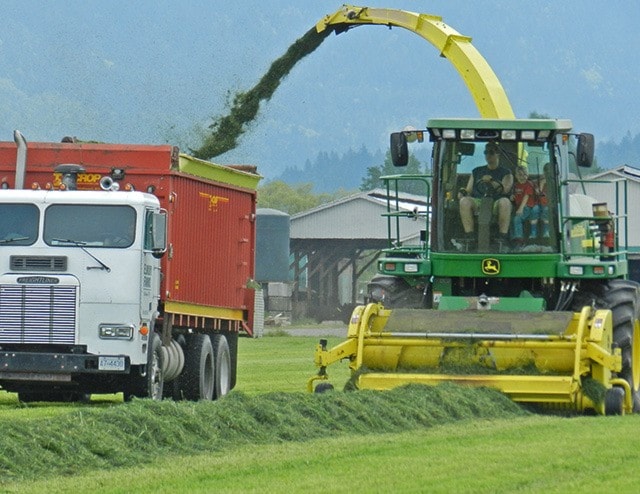Weather dictates almost everything when you’re farming.
The corn came up across Chilliwack recently and it desperately needs the rain that was falling on Tuesday, with a little more expected Wednesday.
The dry weather means farmers may have plowed and planted their fields earlier than usual this spring, and fewer mosquito larvae will be hydrated in the river channels.
But the paltry April and May rain totals make for the driest on record, according to Roger Pannett, the Environment Canada volunteer weather observer for Chilliwack.
It rained 39.4 mm in May, compared to an average May rainfall of 98.3 mm, said Pannett. Most of that fell on May 5, when the 24.4 mm of rain became the “most significant” rainfall since the middle of March 2015.
Rainfall totals were 60 per cent below normal.
“The abnormally mild and warm record-breaking conditions of the past four months continued into May,” said Pannett in his monthly weather report, citing a mean temperature of 16.68 C, which made it the warmest May since local records began in 1895.
The previous warmest May was in 1993 with a mean temperature of 16.07 C.
With 67 per cent of the land base in Chilliwack being agricultural, the amount of rain has impacts locally.
Coun. Chris Kloot noted it’s been pretty dry out there across Chilliwack, and was praising the raindrops on his windshield Monday night.
“I’m a farm kid, not a crop farmer, but I know there have been three years of drier than normal conditions.”
It’s been a pattern in the whole region, he said.
He runs a chicken farm but also helps on his brother’s dairy farm sometimes, driving tractor in the fields where they grow corn for cows.
“Weather dictates everything when farming,” he said.
They were hoping for a really good downpour yesterday and today since the dryness leads to lower yields.
Alternating periods of rain and sun mean a bumper crop.
In the absence of rain, agri-food producers get out the irrigation equipment.
“The irrigation reels and gun work well but nothing compares to a good rain.”
Temperature extremes for the month of May included a maximum of 29.0 C on May 21 and a minimum of 4.5 C on May 5 with an unusually low elevation snowfall.
The April (54.1mm) and May (39.4mm) totals mirrored the previous driest spring period recorded in 1912.
“The trend indicating a hot and dry summer remains,” said Pannett.
The 2015 precipitation total to date is 593.7 mm on 73 days compared to the average of 859.1 mm on 80 days.
“Summer has arrived early! Too warm and too dry!” he noted.
